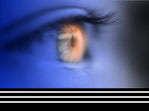Preventative Health: What Every Woman Should Know
by Marilyn Seiger
If you’re a woman, you have many more preventative reasons to see your doctor than any man. So here’s
what you need to know about simple, routine tests that could save your life.
Too many checkups, too little time? You owe it to yourself to get the recommended screenings. Partner with
your doctor to determine the preventative tests you need and when you need them, based on your personal health profile.
As a woman, you have many reasons- birth control, pregnancy, menopause, and protection against potentially
fatal conditions, such as cervical and breast cancer- to see your family doctor or gynecologist regularly. These visits typically
include pelvic and breast exams. But if you’re at high risk for certain diseases, your doctor may recommend additional
tests, or want you to be screened more frequently or at a younger age. Those factors may include family history; smoking;
and your age, sex or ethnic group.
Tests are vital
In any case, you need to play an active role. If you’re not sure how to do a breast self-exam,
for instance, ask your doctor to show you. And make sure these vital preventive tests are part of your health routine:
Pelvic check. During a screening pelvic exam, your doctor checks your cervix, ovaries and uterus, and
performs a Pap test, or Pap smear, unless you’ve had a hysterectomy. A Pap smear helps detect changes in the cells of
the cervix, the opening of your uterus, which could lead to cancer. Over the past 50 years, the Pap smear has lowered the
number of deaths from cancer of the cervix by 70% in the United States. Your doctor gently scrapes the surface of your cervix
to collect a sample of cells for evaluation. Discuss with your doctor when to start having Pap smears and how often to have
them. Generally, you should have your first Pap smear when you start having sex or by age 21. Continue once a year until you’ve
had at least three normal results. After that, have a Pap smear at least every three years until age 65, unless your doctor
thinks you should have one more often due to risk factors or previously abnormal smears.
Breast health exams. About one in nine women develops breast cancer, and the risk increases with age.
Finding and treating breast cancer early can save your life. About 90% of breast lumps are found during breast self-exams,
which you can do regularly, beginning at about age 20. Your doctor should also check your breasts regularly for lumps and
irregularities. Despite some controversy about its benefits in women under age 50, mammography, a breast x-ray, is still considered
the gold standard for early detection of breast cancer by leading cancer organizations. The American Academy of Family Physicians
recommends that, starting at age 40, you should have a mammogram every one to two years, after your family doctor has counseled
you about potential benefits and risks.
Osteoporosis screening.
After age 30 to 35, women begin to lose bone mass. This loss speeds up after
menopause, unless estrogen hormones are taken. At age 65, or at age 60 if there are extra risk factors, women should have
a screening osteoporosis scan. Your family doctor can arrange this. If you have osteoporosis, treatment can be started that
will help prevent further thinning of your bones and even improve bone strength in some cases.
Plan your checkups.
For a healthier you, let your family doctor be your guide to detecting and preventing problems.
Take time to make checkups and screenings a part of your health routine for a lifetime. You’re worth it.
It Makes Sense
Concerned about a breast lump? Afraid you might be developing brittle bones? Don’t dodge the issue!
Talk with your family doctor.
1.
Remember that, although a breast lump is a concern, it is quite possibly a benign cyst or growth,
not cancer- but you should get it checked out right away.
2. Eating well is one of the most beneficial ways to guard against brittle bones. Look for foods that
are high in calcium.
3. Make the time to have the recommended checkups and screenings throughout your life- not just when
you have concerns.
4. Remember that your family doctor is there to help you. Sharing your concerns can bring you reassurance.
Your Doctor Needs To Know:
1. Do breast or cervical cancer, or brittle bones run in your family?
2. If you’re concerned about brittle bones, what did you eat this past week?
3. Have you had an abnormal result for a screening test in the past?
4. Do you know how to carry out a breast self-exam correctly?
5. When did you last have a mammogram?
Additional Information:
American Academy of Family Physicians
http://familydoctor.org/
American College of Obstetricians and Gynecologist
www.acog.org
National Women’s Health Information Center
www.4woman.gov
Intelihealth
www.intelihealth.com

